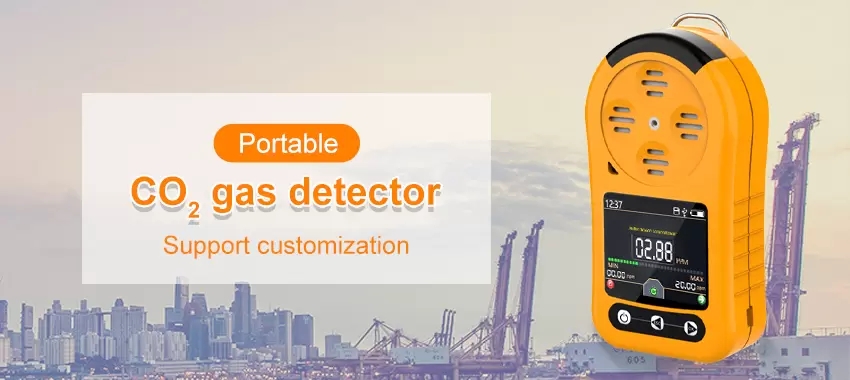Installing CO2 detector has become increasingly important in maintaining a healthy indoor environment. Beause one of the key factors affecting air quality is the concentration of CO2 in enclosed spaces. This article will explore the significance of CO2 detectors in identifying and mitigating risks associated with elevated CO2 levels, ultimately improving the overall quality of life.

Understanding CO2 and Its Effects:
Carbon dioxide is a colorless, odorless gas that naturally occurs in the Earth’s atmosphere. It is an essential part of the carbon cycle, necessary for plant photosynthesis. However, excessive amounts of CO2 indoors can have adverse effects on human health. When CO2 levels rise, it can lead to symptoms such as headaches, dizziness, fatigue, difficulty concentrating, and even respiratory problems. Therefore, constant monitoring of CO2 levels is crucial to maintain a healthy indoor environment.
The Role of CO2 Detector:

CO2 detector are devices to measure the concentration of CO2 in the air. They work by using sensors that detect and analyze the amount of CO2 present. When the levels exceed a certain threshold, the detector emits an alarm, alerting occupants to take necessary actions to improve the air quality. This real-time monitoring feature allows individuals to tackle the issue promptly, preventing potential health hazards.
Benefits of CO2 Detectors:
Ensuring Indoor Air Quality: CO2 detectors serve as an early warning system for excessive CO2 accumulation. By having a detector in place, one can promptly identify and address any potential issues related to poor ventilation or over-occupied spaces.

Preventing Health Risks: Elevated CO2 levels can cause various health problems, particularly for individuals with respiratory conditions. CO2 detectors help minimize the risk of these health issues and provide a safer environment for everyone, especially in schools, offices, and other public spaces.
Energy Efficiency: CO2 detectors serve as an effective tool to optimize ventilation systems. By monitoring CO2 levels, HVAC (Heating, Ventilation, and Air Conditioning) systems can be adjusted accordingly, saving energy without compromising indoor air quality.
Compliance with Building Regulations: Many building codes and regulations now require the installation of CO2 detectors in commercial and residential buildings. Compliance not only ensures the safety of occupants but also avoids potential legal liabilities.
Proper Placement of CO2 Detectors:
To maximize the effectiveness of CO2 detectors, proper placement is essential. Multiple detectors should be strategically positioned in various zones within a building. Areas with higher occupancy and limited ventilation, such as conference rooms, classrooms, and bedrooms, should be prioritized. It is advisable to mount detectors at breathing height (around 4-6 feet from the floor) for accurate measurements.
Conclusion:
CO2 detectors play a critical role in safeguarding indoor air quality. By constantly monitoring and alerting individuals to elevated CO2 levels, these devices contribute to healthier and safer living environments. With their ability to prevent health risks, improve energy efficiency, and comply with building regulations, CO2 detectors are becoming increasingly indispensable. As we prioritize well-being and sustainability, investing in CO2 detectors is a proactive step towards ensuring a healthy future for all.
